Contents
Affordable Stem Cell Therapy in Mexico City for US & Canadian Patients
Are you from the US or Canada and dealing with chronic pain or a tough health issue—but worried about the high cost of treatment at home? You're not alone. Many patients are now choosing Stem Cell Therapy in Mexico City as an affordable and effective option. The city offers modern clinics, skilled doctors, and treatments that can cost up to 70% less than in North America.
Whether you’re facing joint pain, nerve problems, or immune-related conditions, Mexico City has trusted clinics ready to help. Many have English-speaking staff and experience caring for international patients. If you’re looking for real results without the big price tag, stem cell therapy in Mexico City might be the right step for your healing journey.
Key Insights at a Glance:
Affordable Packages for Stem Cell Treatment in Mexico City, Mexico
Explore Stem Cell Therapy packages in Mexico City, Mexico, where PlacidWay has put together low-cost options from reliable clinics. These packages are made to give you great care without stretching your budget. Take a look at our listings and find the perfect package that fits your needs and budget.
`Cost of Stem Cell Treatment in Mexico City, Mexico
Stem Cell Therapy in Mexico City, Mexico, is a more affordable option for those seeking treatment. On average, the cost is around $5,990, which is much lower than the $25,000 typically found in the US. This means you can save up to 75% while still receiving high-quality care. Explore your options today!
Stem Cell Therapy Centers Cost Comparison in Mexico City, Mexico
| Provider | Procedure | Price |
|---|---|---|
| MexStemCells Clinic | Stem Cell Treatment for Multiple Sclerosis, Stem Cell Therapy | $8900 |
| MexStemCells Clinic | Stem Cell Treatment for Cerebral Palsy, Stem Cell Therapy | $6500 |
| MexStemCells Clinic | Stem Cell Treatment for Diabetes, Stem Cell Therapy | $6500 |
| MexStemCells Clinic | Stem Cell Therapy for Joints, Stem Cell Therapy | $5000 |
Stem Cell Therapy Cost Comparison in Mexico
| Country | Procedure | Price |
|---|---|---|
| United States | Stem Cell Treatment for Autism, Stem Cell Therapy | $25000 |
| United States | Stem Cell Treatment for Multiple Sclerosis, Stem Cell Therapy | $25000 |
Best Stem Cell Clinics in Mexico City, Mexico
Our partner clinics in Mexico City specialize in stem cell therapy, offering updated treatments for various health conditions. These trusted centers provide great care and skilled doctors to support your health needs. Explore below to find the right clinic for you.
Top Videos to Watch about Regenerative Therapy in Mexico
Welcome to our video section! Here, you can watch helpful videos about Stem Cell Therapy in Mexico City, Mexico. These videos will help you understand the process and what to expect along the way. These resources are perfect for anyone looking to feel more confident about their choices. Our videos focus on supporting you and providing clarity about Stem Cell Therapy. Explore the videos below to learn more, hear personal stories, and get tips for before, during, and after your treatment. We’re here to help you feel ready!
Stem Cell Therapy in Mexico City Reviews
Check out real patient stories about Stem Cell Therapy in Mexico City, Mexico, from Google and Trustpilot. These reviews offer helpful insights into what to expect from your treatment journey!
FAQs About Stem Cell Therapy in Mexico City
What is Stem Cell Therapy?
A treatment that uses stem cells to regenerate damaged tissues and improve healing. Clinics in Mexico City use advanced technology and experienced professionals for conditions like arthritis and neurological disorders.
How to Choose a Clinic?
Research licensed clinics with certified staff, good reviews, and experience in your condition. Look for pre-treatment consultations and strong safety protocols.
What Happens During the Procedure?
Expect an evaluation, stem cell extraction, and injection or infusion, usually completed in a day. Follow-up visits ensure progress.
What are the Risks?
Risks include infection, allergic reactions, or complications, but a reputable clinic minimizes them and informs you thoroughly.
What is Recovery Like?
Most recover in days with mild discomfort. Full benefits may take weeks to months, with follow-ups to monitor progress.
What is the Average Price of Stem Cell Therapy for Parkinson's Disease in Mexico?
Stem cell therapy for Parkinson's Disease (PD) is an area of significant research and development within regenerative medicine, offering hope for managing symptoms and potentially slowing disease progression. Mexico, particularly clinics in popular medical tourism hubs like Tijuana, has become a destination for patients seeking these advanced, often investigational, treatments at a more accessible cost. What is the Average Price of Stem Cell Therapy for Parkinson's Disease in Mexico? "The average price of stem cell therapy for Parkinson's Disease in Mexico typically ranges from $8,000 to $15,000 USD per treatment session. This cost can vary significantly based on the type and quantity of stem cells used, the administration method (e.g., intravenous, intrathecal), the specific clinic's protocol, and any included complementary therapies or services." For example, some clinics offer protocols starting around $8,000 to $10,000 USD for a specific cell count and administration method. More comprehensive packages, involving higher doses of stem cells (e.g., 100 million or more), multiple types of cells, or additional supportive treatments like exosomes, PRP, or specific IV drips, might reach up to $15,000 USD or potentially slightly higher. As of June 2025, these prices represent a substantial saving compared to the United States or Canada, where similar investigational treatments, if available, could cost upwards of $20,000 to $50,000+ per session. What are the typical costs for a single session of stem cell therapy for Parkinson's Disease in Mexico? "The typical costs for a single session of stem cell therapy for Parkinson's Disease in Mexico generally fall between $8,000 and $15,000 USD, with pricing influenced by the specific type and concentration of stem cells and the complexity of the treatment protocol." The cost of stem cell therapy for Parkinson's Disease in Mexico reflects the individualized nature of these advanced treatments. Here's a general breakdown: Standard Protocols (e.g., IV administration with standard cell count): You might find treatments starting from $8,000 to $10,000 USD. These usually involve a defined number of Mesenchymal Stem Cells (MSCs), often derived from umbilical cord tissue, administered intravenously. This is often the starting point for patients seeking general neurological support. Higher-Dose or Combination Protocols: As the number of stem cells administered increases (e.g., 50 million, 100 million, or more), or if the treatment involves additional components like exosomes (extracellular vesicles with regenerative properties), Platelet-Rich Plasma (PRP), or specific neurotrophic factors, the price can increase to $10,000 to $15,000 USD. These higher doses or combinations may be recommended for more advanced stages of PD or for patients seeking more intensive treatment. Advanced Administration Routes: While less common, if a clinic offers more invasive administration methods (e.g., intrathecal injection into the spinal fluid, which aims for closer delivery to the central nervous system), the cost would typically be on the higher end of the spectrum due to increased complexity and specialized expertise required. The exact cost will always be determined after a thorough medical evaluation by the clinic's specialists, who will then design a personalized treatment plan. Why is stem cell therapy for Parkinson's Disease more affordable in Mexico? "Stem cell therapy for Parkinson's Disease is more affordable in Mexico primarily due to lower operational costs for specialized clinics, reduced labor wages for highly skilled medical professionals, and a more favorable regulatory environment for regenerative therapies compared to the United States, allowing for significant cost savings for patients." The substantial cost advantage of seeking stem cell therapy for Parkinson's Disease in Mexico (often saving 50% to 70% compared to equivalent treatments in the US) is a major draw. This affordability stems from economic differences, rather than a compromise on the quality of care or the stem cells themselves at reputable clinics: Lower Overhead Costs: The operational expenses for medical facilities in Mexico, including rent for clinics, utilities, medical supplies, and general administrative costs, are considerably lower than in the US or Canada. Reduced Labor Wages: While Mexican medical specialists, including neurologists, stem cell therapists, nurses, and lab technicians, are highly trained and experienced, their salaries are significantly lower than what their counterparts earn in North America. This significantly reduces the overall cost of providing the therapy. Regulatory Framework: As of June 2025, the regulatory landscape for stem cell therapies in Mexico, overseen by COFEPRIS (Mexico's equivalent of the FDA), allows for broader and more accessible applications of regenerative treatments than in the US. In the US, many stem cell therapies for neurological conditions like PD are still considered investigational and can only be accessed through costly clinical trials or under specific, limited exemptions. This regulatory difference reduces development and operational costs for Mexican clinics. Favorable Exchange Rates: The purchasing power of the US dollar against the Mexican Peso further enhances affordability for international patients. Competitive Market: Mexico's robust medical tourism sector, particularly in cities like Tijuana and Guadalajara, fosters competition among specialized clinics, encouraging them to offer attractive pricing for advanced therapies. These combined factors enable reputable Mexican clinics to provide cutting-edge stem cell therapy for Parkinson's Disease at a fraction of the cost seen in many other countries. What types of stem cells are used for Parkinson's Disease treatment in Mexico? "For Parkinson's Disease treatment in Mexico, clinics primarily utilize Mesenchymal Stem Cells (MSCs), most commonly derived from umbilical cord tissue (Wharton's Jelly), but also from adipose (fat) tissue or bone marrow, due to their neuroprotective, anti-inflammatory, and immunomodulatory properties." MSCs are the most prevalent type of stem cell employed in regenerative medicine for neurological conditions like Parkinson's Disease. They are multipotent cells that can differentiate into various cell types and exert therapeutic effects through several mechanisms: Neuroprotection: MSCs can release growth factors and other molecules that help protect existing dopamine-producing neurons from further degeneration. Anti-inflammation: They possess powerful anti-inflammatory properties that can reduce neuroinflammation in the brain, which is implicated in PD progression. Immunomodulation: MSCs can modulate the immune system, potentially calming autoimmune responses that may contribute to neuronal damage. Trophic Support: They secrete factors that promote tissue repair and regeneration. Common sources for MSCs in Mexico include: Umbilical Cord Tissue-Derived MSCs: These are "allogeneic" (donor-derived) and are a preferred source due to their abundance of young, potent, and ethically sourced cells. They are considered immune-privileged, reducing the risk of rejection. Adipose-Derived Stem Cells (ADSCs): These are usually "autologous" (from the patient's own fat tissue) or, less commonly, allogeneic. They are harvested via liposuction, processed, and then re-administered. Bone Marrow-Derived Stem Cells (BMSCs): Also autologous, harvested from the patient's bone marrow. While effective, harvesting is more invasive and cell potency can decrease with age. The specific type, source, and quantity of MSCs used will be determined by the clinic's protocol and the patient's individual neurological assessment. What is typically included in the price of stem cell therapy packages for Parkinson's Disease in Mexico? "The price of stem cell therapy packages for Parkinson's Disease in Mexico typically includes the initial medical consultation, the cost of stem cells (sourcing and processing), administration of cells (e.g., IV, intrathecal), and immediate post-treatment monitoring, with some clinics offering additional supportive therapies or logistics." When considering stem cell therapy for Parkinson's Disease in Mexico, it's crucial to obtain a detailed, itemized quote to understand exactly what is covered in the package. Reputable clinics typically offer comprehensive services: Medical Consultation: This involves a thorough review of your medical history, current PD symptoms, diagnostic imaging (MRI, PET scans), and a neurological evaluation to assess your suitability and create a personalized treatment plan. This may include remote initial consultations. Stem Cell Sourcing and Preparation: The cost of acquiring the specific type and quantity of stem cells (e.g., from a certified umbilical cord bank) and the sophisticated laboratory processing to ensure cell viability and purity. Administration of Cells: The cost associated with the chosen delivery method, whether it's intravenous (IV) infusion, intrathecal injection (into the spinal fluid), or a combination of approaches. Post-Treatment Monitoring: Immediate observation and care after the procedure to monitor for any adverse reactions and ensure patient stability. Medical Team Fees: Fees for the specialized neurologists, stem cell therapists, nurses, and technicians involved in your treatment. Medications: Initial medications administered during the treatment process. Logistical Support (Varies by clinic): Some comprehensive packages may include ground transportation from the border or airport to the clinic/hotel, and even accommodation for a few nights. What is often not included and should be budgeted separately: Extensive Pre-treatment Diagnostics: While some basic labs might be included, specialized neurological assessments or advanced imaging (e.g., functional MRI) might be extra if not already completed. Additional Therapies: Complementary treatments like exosomes, NAD+ IV drips, hyperbaric oxygen therapy (HBOT), or specific physical/occupational therapy sessions might be offered as add-ons. Multiple Sessions: If a series of treatments is recommended for sustained benefits, each session will typically be a separate cost. Travel and Accommodation: Unless explicitly stated in a premium package, flights, hotel stays, local transportation beyond clinic transfers, and meals are separate expenses. Long-term Follow-up: While immediate post-treatment contact is usually provided, long-term neurological monitoring by the clinic or your local neurologist is typically not included. Always request an itemized quote to ensure full transparency and avoid any unexpected expenses. What factors influence the total cost of stem cell therapy for Parkinson's Disease in Mexico? "The total cost of stem cell therapy for Parkinson's Disease in Mexico is primarily influenced by the type and quantity (number of cells) of stem cells used, the administration method, the number of treatment sessions, the clinic's reputation and specialization, and any complementary therapies included in the protocol." The personalized nature of stem cell therapy means that the final cost can vary significantly. Key factors impacting the price include: Stem Cell Type and Quantity: Umbilical cord-derived MSCs are generally more expensive due to their sourcing from licensed banks and processing. Higher cell counts (e.g., 100 million+ cells per dose) are typically associated with higher costs, as they involve more complex lab work and sourcing. Administration Method: Simple intravenous (IV) infusions are usually less expensive than intrathecal (spinal fluid) injections, which require specialized training and equipment for precise delivery to the central nervous system. Number of Treatment Sessions: Many protocols for chronic neurological conditions like PD recommend multiple sessions over time (e.g., annually, bi-annually, or a series over a few weeks) for potential cumulative or sustained benefits. Each additional session will increase the overall cost. Clinic Reputation and Medical Team: Highly renowned clinics with advanced research capabilities, state-of-the-art facilities, and leading neurologists or regenerative medicine specialists will likely charge more for their expertise and infrastructure. Complementary Therapies: Many clinics offer integrated treatment plans that combine stem cell therapy with other modalities like exosome therapy, NAD+ IV drips, neurorehabilitation programs, or hyperbaric oxygen therapy, which will add to the total cost. Pre- and Post-Treatment Diagnostics: Comprehensive neurological assessments, advanced imaging (MRI, PET scans), or long-term biomarker testing might be an additional cost if not specifically bundled. A detailed discussion with the clinic about your specific condition and their recommended protocol is essential to get an accurate cost estimate. How does the pricing of stem cell therapy for Parkinson's Disease in Mexico compare internationally? "The pricing of stem cell therapy for Parkinson's Disease in Mexico is significantly lower compared to countries like the United States and parts of Europe, where similar investigational treatments, if available, can cost anywhere from $20,000 to $50,000 USD or more per session." The cost differential makes Mexico a highly attractive option for patients worldwide: United States: As of June 2025, many stem cell therapies for neurological conditions like PD are considered investigational by the FDA. Access is typically limited to clinical trials (which may have costs or be covered by grants) or specific, often very expensive, unapproved clinics operating under limited exemptions. A single session, if offered outside of a trial, could be in the range of $20,000 to $50,000+ USD. Europe: Prices in some European countries (e.g., Germany, Switzerland) for advanced regenerative therapies can also be substantial, often ranging from €15,000 to €40,000+ per treatment. Other Medical Tourism Hubs: While other countries like Panama or Costa Rica also offer stem cell therapies, Mexico, particularly its border cities like Tijuana, remains extremely competitive, especially for North American patients due to its convenient proximity. The lower pricing in Mexico allows more individuals to access these potentially life-improving stem cell treatments for Parkinson's Disease. Is stem cell therapy for Parkinson's Disease covered by insurance in Mexico or my home country? "No, stem cell therapy for Parkinson's Disease is generally not covered by standard health insurance in Mexico, the United States, Canada, or most other countries, as it is primarily considered an experimental or investigational therapy by major regulatory bodies." As of June 2025, patients considering stem cell therapy for Parkinson's Disease should anticipate paying the full cost out-of-pocket. Here's why insurance typically doesn't provide coverage: Investigational Status: Most insurance companies adhere to the guidelines of regulatory bodies (like the FDA in the US, Health Canada) which classify these treatments as investigational. Until they receive full approval as standard medical practice for Parkinson's Disease with extensive, long-term efficacy and safety data, insurance coverage is highly unlikely. Lack of Definitive Clinical Trial Data: Insurers typically require robust, large-scale, placebo-controlled clinical trial data demonstrating clear long-term efficacy and safety for specific indications before they will cover a treatment. This data is still being gathered for stem cell therapy in PD. Off-Label Use: Even if stem cells are approved for certain orthopedic or blood conditions, their use for neurological conditions like PD is considered "off-label" and therefore not covered. Elective Nature: From an insurance perspective, many experimental treatments are deemed elective or non-essential, falling outside of standard coverage. Out-of-Network/Out-of-Country: Even if a plan had some experimental coverage, it would likely not extend to treatment obtained in a foreign country or from providers not in their network. While Flexible Spending Accounts (FSAs) or Health Savings Accounts (HSAs) in the US might be used for these expenses, it's crucial for patients to confirm eligibility with their plan administrator directly. How to find a reputable clinic for stem cell therapy for Parkinson's Disease in Mexico? "To find a reputable clinic for stem cell therapy for Parkinson's Disease in Mexico, prioritize clinics with board-certified neurologists and regenerative medicine specialists, transparent pricing, verifiable cell quality and sourcing, strong patient testimonials, and clear communication regarding treatment protocols and realistic expectations." Choosing a reputable clinic is paramount for safety and potential efficacy when dealing with a complex neurological condition like Parkinson's Disease. Here's a checklist for thorough vetting: Medical Team Credentials: Ensure the doctors overseeing and administering the treatment are board-certified in relevant specialties (e.g., Neurology, Internal Medicine, Regenerative Medicine) and have specific experience with stem cell applications for neurological disorders. Transparency in Stem Cell Sourcing and Processing: This is critically important. Ask about the source of their stem cells (e.g., accredited umbilical cord tissue banks, in-house adipose/bone marrow processing labs), how they are processed, and if they provide Certificates of Analysis (COAs) for cell count, viability, and purity for each batch. Clinic Licensing and Accreditations: Verify that the clinic is fully licensed by the Mexican Ministry of Health (COFEPRIS). While international accreditation (like JCI) is less common for specialized stem cell clinics, it's a strong indicator of quality if present. Detailed Treatment Protocols: The clinic should provide a clear, individualized treatment plan based on your specific PD stage, explaining the rationale, dosage, administration routes, expected outcomes (realistic), and potential risks. Realistic Expectations: Be wary of clinics that make exaggerated claims or promise "cures." Reputable clinics will emphasize the investigational nature of the treatment and manage expectations responsibly, focusing on symptom management and potential disease modification rather than a full cure. Patient Testimonials and Reviews: Look for consistent positive feedback on independent platforms. Inquire if they can connect you with past patients (while respecting privacy). Communication: Ensure staff are multilingual and provide clear, prompt, and empathetic communication. Facility Standards: Ask for photos or virtual tours of their lab (if they process in-house) and treatment facilities to assess cleanliness and professionalism. Emergency Protocols: Inquire about their emergency preparedness and access to hospital facilities if needed. Thorough research, direct communication, and a healthy dose of skepticism are key to making a safe and informed decision about stem cell therapy for Parkinson's Disease in Mexico. Ready to explore potential innovative therapies for Parkinson's Disease? Visit PlacidWay to discover world-class medical tourism options and connect with trusted providers offering high-quality, affordable stem cell treatment for Parkinson's Disease in Mexico.
What is the cost of Stem Cell Treatment for Diabetes in Mexico City, Mexico?
Diabetes is a chronic condition that affects millions of people worldwide, with significant impacts on quality of life. Type 1 and Type 2 diabetes can lead to serious complications, including heart disease, kidney failure, nerve damage, and more. While traditional treatments, such as insulin therapy and lifestyle changes, are essential, they may not be sufficient to fully manage the disease for everyone. As a result, innovative treatments like stem cell therapy have gained attention as a potential solution.In Mexico, particularly in Mexico City, stem cell therapy for diabetes is becoming an increasingly popular treatment option for those seeking alternatives to conventional methods. Mexico City has become a hub for medical tourism due to its advanced medical facilities, experienced specialists, and affordable treatment options. For patients considering stem cell treatment for diabetes, it is important to understand the costs, factors influencing the price, and the potential benefits and risks involved.This article will provide a comprehensive overview of the cost of stem cell treatment for diabetes in Mexico City, the factors influencing the cost, and important considerations when opting for this treatment. Key Insights at a Glance The cost of stem cell treatment for diabetes in Mexico City typically ranges from $5,000 to $20,000. The cost depends on the type of stem cells used and the number of sessions required. The treatment can be customized based on the patient's condition, which can affect the overall cost. Many clinics offer packages that include consultation, treatment, and post-treatment care. Stem cell treatment for diabetes is still considered experimental and may not be covered by insurance. What is Stem Cell Treatment for Diabetes? Stem cell therapy is an emerging and innovative medical treatment that involves using stem cells to repair or regenerate damaged tissues in the body. In the case of diabetes, stem cells have the potential to regenerate insulin-producing cells in the pancreas or help manage the body's response to insulin. This regenerative approach could potentially offer a more effective way to control or even reverse some of the complications associated with diabetes. There are two main types of stem cells commonly used for diabetes treatment: Autologous Stem Cells: These stem cells are taken from the patient’s own body, typically from fat or bone marrow. They are then processed, activated, and reintroduced into the patient to stimulate regeneration. Allogeneic Stem Cells: These stem cells come from a donor. They are usually derived from umbilical cord tissue or from other sources and are processed before being injected into the patient. Stem cell therapy for diabetes is aimed at stimulating the body’s own healing mechanisms, with the goal of improving insulin production, regulating blood sugar levels, and reducing the reliance on medication. This treatment is still considered experimental, and while results can vary from patient to patient, it has shown promise in some clinical trials. Cost Breakdown of Stem Cell Treatment for Diabetes in Mexico City Mexico City has become a leading destination for stem cell therapies, offering lower costs than many Western countries while maintaining high standards of medical care. The cost of stem cell treatment for diabetes in Mexico City depends on several factors, including the clinic, the type of stem cells used, and the number of treatment sessions required. Below is a general breakdown of the costs: Initial Consultation and Diagnosis Cost Range: $200 - $500 Before beginning stem cell therapy, a comprehensive consultation is necessary to assess the patient's health condition, medical history, and suitability for stem cell treatment. The consultation may include lab tests, scans, and blood work to evaluate the extent of the diabetes and its complications. Stem Cell Therapy (Per Session) Cost Range: $5,000 - $12,000 per session The cost for stem cell therapy depends on the clinic, the type of stem cells used (autologous or allogeneic), and the treatment protocol. Some clinics offer a single-session treatment, while others may recommend a series of treatments for better results. A single session of stem cell therapy can cost between $5,000 and $12,000. Stem Cell Type (Autologous vs. Allogeneic) Cost Range: Additional $2,000 - $5,000 for allogeneic stem cells Allogeneic stem cells, which are sourced from a donor, are usually more expensive than autologous stem cells, which come from the patient’s own body. The cost difference arises from the additional processing and testing required for donor stem cells. Follow-Up Care and Monitoring Cost Range: $500 - $2,000 Follow-up care is essential to monitor the progress of the treatment, including regular check-ups, blood tests, and assessments of blood sugar levels. Some clinics include follow-up care in the initial treatment package, while others may charge separately for these services. Additional Costs Cost Range: Varies Additional costs may include medications or supplements prescribed to support the stem cell treatment, travel expenses, and accommodation. Patients coming from other countries may need to budget for flights, hotel stays, and transportation. Estimated Total Cost for Stem Cell Treatment for Diabetes in Mexico City Procedure Cost Range (USD) Initial Consultation and Diagnosis $200 - $500 Stem Cell Therapy (Per Session) $5,000 - $12,000 Stem Cell Type (Autologous vs. Allogeneic) $2,000 - $5,000 additional Follow-Up Care and Monitoring $500 - $2,000 Total Estimated Cost per Treatment $5,000 - $20,000+ Did You Know? Stem cell treatments for diabetes are available at a fraction of the cost in Mexico City compared to similar procedures in the U.S., making it an appealing option for many international patients. Factors That Influence the Cost of Stem Cell Treatment for Diabetes Several factors contribute to the variation in stem cell treatment costs for diabetes in Mexico City. Here’s what you need to consider: Type of Stem Cells Used The cost of stem cells can vary significantly depending on whether autologous or allogeneic stem cells are used. Allogeneic stem cells are typically more expensive due to the additional processing and testing requirements. Number of Sessions Some patients may require just one treatment session, while others may need multiple sessions for optimal results. Clinics may offer discounts for multiple sessions or treatment packages, but the total cost will increase if additional sessions are needed. Clinic Reputation and Expertise The experience and reputation of the clinic can affect the price. Clinics that are well-established, have experienced specialists, and use cutting-edge technology may charge more for their services, but they may also provide higher success rates and comprehensive care. Additional Services The treatment cost may include additional services such as pre-treatment tests, post-treatment monitoring, and support therapies. Some clinics offer all-inclusive packages, while others may charge separately for specific services. Travel and Accommodation Costs For international patients, the cost of travel, accommodation, and local transportation can add up quickly. Mexico City is easily accessible from various parts of the world, but patients should still factor in these costs when budgeting for stem cell treatment. Benefits of Stem Cell Therapy for Diabetes in Mexico City Affordable Pricing: Stem cell treatment in Mexico City is generally much more affordable than in countries like the U.S., offering significant savings without compromising on the quality of care. Advanced Medical Facilities: Many clinics in Mexico City are equipped with state-of-the-art technology, ensuring that patients receive high-quality, cutting-edge care. Experienced Specialists: Mexico City is home to many skilled doctors and specialists in regenerative medicine who have trained internationally and are well-versed in stem cell therapy for diabetes. Access to Personalized Care: Clinics in Mexico City often offer personalized treatment plans tailored to each patient’s unique needs, enhancing the chances of success with stem cell therapy. Medical Tourism Benefits: Mexico City is a well-known medical tourism destination, with a growing number of clinics offering packages that include consultation, treatment, and accommodation, making the process smooth for international patients. Did You Know? Many stem cell clinics in Mexico City provide bilingual staff and have experience working with international patients, making the process more accessible for English-speaking visitors. Risks and Considerations While stem cell therapy for diabetes shows promise, there are some risks and considerations to be aware of: Experimental Nature: Stem cell therapy for diabetes is still considered experimental. While early results have shown promise, long-term effectiveness and safety are not fully established, and the treatment may not work for everyone. Potential Side Effects: Like any medical procedure, stem cell therapy carries some risks. Patients may experience mild side effects such as soreness at the injection site, allergic reactions, or immune system responses. Lack of Insurance Coverage: Most insurance providers do not cover stem cell treatments, as they are considered experimental. Patients will likely need to pay for the procedure out of pocket. Uncertain Long-Term Outcomes: While some patients may see significant improvements in their diabetes management, the long-term impact of stem cell therapy on diabetes remains uncertain, and results can vary widely. Regulatory Considerations: Stem cell therapies are not approved for widespread use in many countries, including the U.S. Therefore, patients should carefully consider the legal and regulatory environment before opting for treatment in Mexico City. FAQs What is the cost of stem cell treatment for diabetes in Mexico City? The cost of stem cell treatment for diabetes in Mexico City typically ranges from $5,000 to $20,000, depending on the type of stem cells used and the number of treatment sessions required. Is stem cell therapy for diabetes safe? While stem cell therapy for diabetes is generally considered safe, it is still experimental. Patients should discuss the potential risks and benefits with their doctor before undergoing the procedure. How many sessions of stem cell therapy are required for diabetes? The number of sessions can vary. Some patients may benefit from a single treatment, while others may require multiple sessions for optimal results. Your specialist will determine the best approach based on your condition. Does insurance cover stem cell treatment for diabetes? Most insurance providers do not cover stem cell treatments for diabetes, as they are still considered experimental. Patients will need to pay for the procedure out of pocket. How soon will I see results from stem cell therapy for diabetes? Results from stem cell therapy for diabetes can vary widely. Some patients report improvements in blood sugar levels and insulin production within weeks, while others may take longer to see noticeable effects. Is stem cell therapy for diabetes available in other parts of Mexico? Yes, stem cell therapy for diabetes is available in other parts of Mexico, such as Tijuana, Guadalajara, and Monterrey. However, Mexico City is one of the leading destinations for stem cell treatments due to its advanced medical facilities and experienced specialists. What should I expect during the treatment process? The treatment process typically involves an initial consultation, followed by stem cell therapy, either through injections or IV. Follow-up care is essential to monitor your progress and ensure the treatment’s effectiveness. Ready to Take the Next Step? If you’re considering stem cell treatment for diabetes in Mexico City, PlacidWay can help you find trusted clinics and schedule a consultation with leading specialists. Our team is dedicated to helping you navigate the process and providing you with personalized treatment options to manage or potentially reverse your diabetes. Contact us today to learn more and start your journey toward improved health!
What is the Cost of Stem Cell Therapy for Kidney Failure in Mexico City, Mexico?
Going on a journey to explore advanced medical treatments can be filled with questions, and when it comes to stem cell therapy for kidney failure in Mexico City, cost is a primary concern for many. The cost of stem cell therapy for kidney failure in Mexico City can range from approximately $4,500 to over $16,000 USD. This variation in price is influenced by the specific clinic, the complexity of the patient's condition, the type and number of stem cells used, and the inclusiveness of the treatment package. As a leader in medical tourism, Mexico offers access to innovative regenerative therapies that may not be widely available or are prohibitively expensive in other countries. This guide will delve into the various aspects of undergoing stem cell therapy for kidney failure in Mexico City, addressing the most pressing questions to provide a clear and comprehensive overview. What is the exact cost of stem cell therapy for kidney failure in Mexico City? "The exact cost of stem cell therapy for kidney failure in Mexico City is not a one-size-fits-all figure, but typically ranges from $4,500 to $16,000 USD and can sometimes be higher." The price of your treatment is determined by a personalized plan developed by the medical team. Key factors that influence the final cost include the severity of your kidney disease, the type of stem cells being utilized (such as mesenchymal stem cells from an umbilical cord or your own body fat), and the number of stem cell applications required. Many reputable clinics in Mexico City offer all-inclusive packages that cover not just the medical procedure, but also associated services like initial consultations, lab work, hospital stays, and sometimes even accommodation and airport transfers. It is crucial to obtain a detailed quote from your chosen clinic that breaks down all the costs involved. This transparency ensures there are no surprises and you can make an informed financial decision. Comparing the cost to what you might pay in the United States or Europe often reveals a significant saving, making Mexico a financially viable option for many seeking this advanced treatment. What factors influence the cost of stem cell therapy in Mexico City? "Several key factors influence the cost of stem cell therapy for kidney failure in Mexico City, including the clinic's reputation, the type and source of stem cells, the number of treatments needed, and the comprehensiveness of the treatment package." Clinic's Reputation and Accreditation: Highly reputable clinics with international accreditations and a long history of successful treatments may have higher prices. However, this often correlates with a higher standard of care and safety. Type and Source of Stem Cells: The most common types used for kidney disease are mesenchymal stem cells (MSCs). These can be sourced from a patient's own bone marrow (autologous) or adipose (fat) tissue, or from donated umbilical cord tissue (allogeneic). The method of sourcing and processing these cells can affect the cost. Number of Stem Cells and Treatments: The total number of stem cells administered and the frequency of the treatments will directly impact the overall cost. A more severe condition may require a higher concentration of stem cells or multiple sessions. Inclusivity of the Package: Some clinics offer packages that include consultations, pre-treatment diagnostics, the procedure itself, post-treatment follow-ups, and even non-medical services like accommodation and transportation. Is stem cell therapy for kidney failure safe in Mexico? "Yes, stem cell therapy for kidney failure in Mexico is considered safe when performed at a reputable and licensed clinic that adheres to strict international and local regulatory standards." Mexico's health regulatory body, COFEPRIS (the Federal Commission for the Protection against Sanitary Risks), oversees medical treatments, including stem cell therapy. Reputable clinics in Mexico City will be transparent about their licensing and will follow stringent protocols for stem cell sourcing, processing, and administration. Patients should conduct thorough research to verify a clinic's credentials, read patient testimonials, and inquire about their safety records. A trustworthy clinic will have a dedicated medical team that conducts a comprehensive evaluation to determine a patient's eligibility for the therapy, thereby minimizing risks. What kind of stem cells are used to treat kidney failure in Mexico? "The most common type of stem cells used for treating kidney failure in Mexico are mesenchymal stem cells (MSCs), which are known for their regenerative and anti-inflammatory properties." These multipotent stem cells can be sourced from a few different places: Umbilical Cord Tissue: This is a popular source as the cells are young, vibrant, and do not require an invasive procedure to collect. They are also less likely to be rejected by the recipient's body. Adipose (Fat) Tissue: A patient's own fat tissue can be a rich source of MSCs. This is an autologous transplant, meaning the cells come from the patient's own body, eliminating the risk of rejection. Bone Marrow: Another autologous source, bone marrow has traditionally been a primary source for stem cells. The choice of stem cell source will be determined by the treating physician based on the patient's specific condition and the clinic's protocols. How effective is stem cell therapy for kidney failure? "The effectiveness of stem cell therapy for kidney failure can vary from person to person, but many patients report significant improvements in their kidney function and overall quality of life." The primary goals of stem cell therapy for kidney failure are to slow the progression of the disease, reduce inflammation, and promote the regeneration of damaged kidney tissue. While it is not a cure, the therapy can lead to a reduction in symptoms, a decreased need for dialysis, and an overall improvement in well-being. It's important to have realistic expectations. The success of the treatment depends on various factors, including the stage of kidney disease, the patient's overall health, and their adherence to post-treatment care. Reputable clinics will provide data on their success rates and share anonymized case studies. What does a typical treatment package in Mexico City include? "A typical stem cell therapy for kidney failure package in Mexico City often includes the initial medical evaluation, the stem cell procedure itself, and post-treatment follow-up consultations." Many clinics that cater to international patients provide comprehensive packages to ensure a seamless experience. These can include: Medical Services: Initial consultation and diagnostics, the stem cell administration, and any necessary medications. Hospital and Clinic Fees: The cost of using the medical facilities. Physician and Staff Fees: The expertise of the medical team. Accommodation: Some packages include a stay in a nearby hotel or an affiliated recovery center. Transportation: Ground transportation between the airport, hotel, and clinic is often included. Always confirm the exact inclusions with the clinic beforehand to ensure there are no hidden costs. How do I choose a reputable clinic in Mexico City? "Choosing a reputable clinic for stem cell therapy in Mexico City involves researching their credentials, reading patient reviews, and having a direct consultation with their medical team." Here are some key steps to take: Verify Credentials: Ensure the clinic is licensed by COFEPRIS and has any other relevant international accreditations. Read Patient Testimonials: Look for reviews on independent platforms to get an unbiased understanding of the patient experience. Consult with the Doctors: A good clinic will offer a free consultation to discuss your case and answer your questions. This is an excellent opportunity to gauge their professionalism and expertise. Transparency in Pricing: A reputable clinic will provide a clear and detailed breakdown of the costs. Ready to explore your options for stem cell therapy? PlacidWay can connect you with leading healthcare providers in Mexico City and around the world. Explore our network of accredited clinics and take the next step in your healthcare journey.
What is the cost of Stem Cell Therapy for Joints in Mexico City, Mexico?
Having Stem Cell Therapy for Joints in Mexico City, Mexico has an average price of $5000. The stem cell therapy medical team will be able to give you a final price after the first medical consultation when it will be determined exactly what type of procedure is needed, how long the treatment will take, what equipment and supplies will be used, etc.More and more patients choose to travel to Mexico in order to undergo stem cell therapy. Thanks to its top notch medical clinics and specialized research centers, Mexico is renowned as a top destination for stem cell treatments. Medical tourists choose to undergo Stem Cell Therapy for Joints in Mexico City, Mexico thanks to various other reasons, such as affordable prices and board certified and experienced doctors.If you choose for undergoing Stem Cell Therapy for Joints in Mexico City, Mexico you will find top doctors, accredited medical centers, highly experienced medical staff, the latest techniques and affordable prices.However, finding the right doctor in Mexico City, Mexico can be overwhelming. Here are some questions that you can ask and which will help you find the right one.Are you a member of any Stem Cell Therapy association or society?What is the treatment’s success rate in general?How many years have you been performing Stem Cell Therapy? How often did you perform it?What was the success rate that you have noticed so far?What are the advantages and disadvantages of Stem Cell Therapy for Joints?Which are the risks and complications?What if I am not happy with the Stem Cell Therapy for Joints results?Are you certified?Mexico has a top choice for medical tourists, offering world-class medical care in the field of stem cell therapy. Internationally accredited medical facilities can be found in key cities such as Mexico City.Below you can find some of the best stem cell therapy specialists in Mexico City, Mexico that offer most affordable price for Stem Cell Therapy for Joints.Stem Cell Therapy for Joints at MexStemCells Clinic (Mexico City): from $5000 Find out more about the best stem cell therapy doctors in Mexico City, Mexico! Contact us and choose the best option for you!DisclaimerStem Cell Therapy is still an experimental treatment. Any information related to stem cell therapy provided in this website is for educational purposes only. It is not intended to replace a consultation with a licensed physician nor be construed as medical advice or any emergency health need you may be expecting.
What is the price of PRP - Platelet Rich Plasma Cell Therapy in Mexico City, Mexico?
In the quest for natural and effective rejuvenation and healing, Platelet-Rich Plasma (PRP) therapy has emerged as a fascinating option. This treatment, which uses the healing power of your own blood, is gaining attention worldwide for its ability to address concerns ranging from aging skin and hair loss to joint pain. If you're considering PRP therapy, Mexico City offers a compelling combination of skilled practitioners and potentially more accessible pricing compared to many other countries. But what exactly is the price of PRP - Platelet Rich Plasma Cell Therapy in Mexico City, Mexico? Let's delve into this innovative treatment and explore its costs in this vibrant capital. Why Choose Mexico City for Your PRP Treatment? Mexico City has become a sought-after destination for various medical and wellness treatments, and PRP therapy is no exception. There are several good reasons why individuals, including international visitors, are drawn to this bustling metropolis for their PRP needs: Cost-Effectiveness: Generally, medical and cosmetic procedures in Mexico City can be significantly more affordable than in countries like the United States, Canada, or many parts of Western Europe. This means you might access high-quality PRP treatments at a fraction of the price you'd pay elsewhere. Qualified Medical Professionals: The city is home to numerous well-trained and experienced doctors, dermatologists, orthopedists, and cosmetic specialists who are proficient in administering PRP therapy. Many have received international training and stay updated with the latest techniques. Modern Clinics and Equipment: Competition and medical tourism have spurred many clinics in Mexico City to invest in modern facilities and state-of-the-art equipment for procedures like PRP preparation and application. Accessibility and Cultural Experience: As a major international hub, Mexico City is easily accessible. Patients also have the opportunity to combine their treatment with an enriching cultural experience, exploring the city's rich history, art, and culinary scenes. Growing Popularity of Regenerative Medicine: Mexico is increasingly embracing regenerative medicine, and PRP is a cornerstone of this field. This focus fosters an environment of innovation and expertise. While cost is a significant factor, it's the blend of quality care, experienced practitioners, and affordability that makes Mexico City an attractive option for PRP therapy. What is Platelet-Rich Plasma (PRP) Therapy, Anyway? Before we talk about costs, let's understand what PRP therapy actually is. It sounds complex, but the basic principle is quite straightforward and relies on your body's natural healing abilities. The Science Simplified: Our blood is made up of several components: red blood cells, white blood cells, plasma (the liquid part), and platelets. Platelets are tiny cells that play a crucial role in stopping bleeding by forming clots. But they do much more than that! Platelets are also packed with hundreds of proteins called growth factors. These growth factors are vital for healing injuries, repairing damaged tissues, and stimulating cell growth. PRP therapy involves: Drawing a small sample of your own blood: Similar to a routine blood test. Processing the blood: This blood sample is placed in a centrifuge, a machine that spins at high speed. This spinning process separates the blood components, concentrating the platelets and growth factors in a small volume of plasma. This resulting "platelet-rich plasma" can have 3 to 7 times (or even more) the concentration of platelets found in normal blood. Injecting the PRP: The concentrated PRP is then carefully injected into the specific area of your body that needs treatment (e.g., your face for skin rejuvenation, your scalp for hair loss, or an injured joint). Once injected, the high concentration of growth factors in the PRP gets to work, signaling cells to regenerate, repair, and rejuvenate the targeted tissue. It’s essentially a way to supercharge your body’s natural healing mechanisms in a specific area. The Many Faces of Healing: Common Uses for PRP Therapy PRP therapy's ability to promote healing and regeneration makes it useful for a wide range of conditions. Some of the most common applications include: Skin Rejuvenation (Facial PRP or "Vampire Facial"): How it helps: When injected into the skin of the face, neck, or hands, PRP can stimulate collagen and elastin production – the key proteins that give skin its firmness, elasticity, and youthful appearance. It can also improve blood flow and new cell growth. Benefits: Can reduce fine lines and wrinkles, improve skin texture and tone, reduce the appearance of acne scars or other superficial scars, shrink pores, and give the skin a healthier, more radiant glow. It's often combined with microneedling for enhanced absorption and results. Hair Restoration (PRP for Hair Loss): How it helps: When injected into the scalp, PRP can awaken dormant hair follicles, stimulate the growth of new hair, and increase the thickness and health of existing hair. The growth factors can prolong the growth phase of the hair cycle. Benefits: Can be an effective treatment for androgenetic alopecia (male and female pattern baldness) and other types of hair thinning. It’s often used to slow down hair loss and promote new growth, leading to increased hair density. Orthopedic and Sports Injuries: How it helps: PRP can be injected into injured joints, tendons, ligaments, or muscles to accelerate healing, reduce inflammation, and alleviate pain. Benefits: Used for conditions like osteoarthritis (especially in the knee), tennis elbow, golfer's elbow, Achilles tendonitis, plantar fasciitis, rotator cuff tears, and other musculoskeletal injuries. It can help patients regain function and reduce the need for more invasive treatments or long-term medication. Other Applications: Wound Healing: PRP can be used to promote faster healing of chronic wounds or after certain surgical procedures. Sexual Wellness: Some applications include PRP for sexual rejuvenation in both men and women, though these are often considered more specialized. The versatility of PRP makes it an exciting option for individuals looking for minimally invasive, natural solutions to various concerns. What Goes into the Price? Factors Influencing PRP Costs in Mexico City The cost of PRP therapy in Mexico City isn't a fixed number. Several factors can influence the final price you'll pay The Area Being Treated: Treating a small area, like specific lines on the face, might cost less than a full-face rejuvenation or extensive scalp treatment for hair loss. Joint injections also vary based on the joint (e.g., a knee injection might differ in price from an elbow injection, or if multiple joints are treated). Number of Sessions Required: PRP therapy is rarely a one-time fix. For optimal results, a series of treatments is usually recommended. Facial Rejuvenation: Often 3-4 sessions, spaced 4-6 weeks apart, with maintenance sessions every 6-12 months. Hair Restoration: Typically 3-6 initial sessions, spaced 4-6 weeks apart, followed by maintenance treatments every 4-6 months or as needed. Orthopedic Conditions: May range from 1 to 3 (or more) injections, depending on the severity and response. The total cost will naturally increase with the number of sessions in your treatment plan. Many clinics offer package prices for a series of treatments, which can be more economical than paying per session. Clinic Reputation and Location: Well-established clinics in prime locations within Mexico City (e.g., Polanco, Roma Norte, Condesa) with highly experienced doctors might charge more than newer or less centrally located clinics. You're often paying for expertise, advanced technology, and a higher level of service. Practitioner's Expertise: The skill and experience of the doctor administering the PRP are crucial for safety and effectiveness. A dermatologist, plastic surgeon, or orthopedic specialist with specific training and a strong track record in PRP therapies may have higher fees. Technology and Kits Used: The quality of the centrifuge and the PRP preparation kits can impact the concentration and purity of the platelets. Clinics using higher-quality, FDA-approved (or COFEPRIS-approved in Mexico) kits might have slightly higher costs, but this can also contribute to better results. Inclusion of Complementary Treatments: Sometimes, PRP is combined with other procedures for enhanced effects. For example: Microneedling with PRP (Vampire Facial): The cost will be higher than PRP injections alone. PRP with hyaluronic acid fillers or other injectables. PRP as part of a larger hair restoration plan (e.g., alongside FUE hair transplant aftercare). These combination treatments will influence the overall price. Consultation Fees and Follow-Up Care: Some clinics may include the initial consultation in the price of the treatment or package, while others might charge a separate fee. Similarly, follow-up appointments might be included or billed separately. Understanding these variables will help you when you start researching clinics and comparing prices. The Bottom Line: PRP Therapy Price Ranges in Mexico City Now for the main question: how much can you expect to pay for PRP therapy in Mexico City? It's important to note that prices can vary widely, and getting direct quotes from clinics for your specific needs is always the best approach. However, based on available information, here’s a general idea: General Price Per Session (MXN and USD Approximation): Mexican Pesos (MXN): A single PRP session can range from approximately $1,200 MXN to $10,000 MXN. More common ranges for a single session at a reputable clinic might be $2,500 MXN to $6,000 MXN. Promotional offers or very basic treatments might be found at the lower end, while high-end clinics or more complex applications will be at the higher end. US Dollars (USD) Approximation (based on an exchange rate of ~18-20 MXN to 1 USD – this can fluctuate): Roughly $60 USD to $500 USD per session. A more typical range might be $125 USD to $300 USD per session. Cost Table: Estimated PRP Therapy Prices in Mexico City (per session) Treatment Application Estimated Cost Range (MXN) per Session Estimated Cost Range (USD) per Session (Approx.) Notes Facial Rejuvenation (Basic) $1,500 - $4,000 MXN $75 - $200 USD Single session, may not include extensive areas or microneedling. Facial Rejuvenation (with Microneedling / "Vampire Facial") $2,500 - $7,000 MXN $125 - $350 USD Combination treatment. Hair Restoration (Scalp) $2,000 - $8,000 MXN $100 - $400 USD Price can vary based on the extent of the area treated. Joint Injections (e.g., Knee, Shoulder) $3,000 - $10,000 MXN $150 - $500 USD Per joint. May depend on whether ultrasound guidance is used. Package of 3 Sessions (Facial or Hair) $4,500 - $18,000 MXN (Total) $225 - $900 USD (Total) Often more cost-effective than paying per session. Price per session within a package is usually lower. Important Considerations Regarding Cost: Package Deals: Many clinics in Mexico City offer packages for multiple sessions (e.g., a series of 3 or 4 treatments) at a discounted rate. This is often the most economical way to approach PRP therapy, as multiple sessions are usually needed. Promotional Offers: You might find very low prices advertised, especially on coupon sites or for new clinics. While tempting, thoroughly vet the clinic and practitioner to ensure quality and safety aren't compromised. USD vs. MXN: Prices for international patients might sometimes be quoted in USD, while local clinics catering primarily to a domestic clientele will price in MXN. Always clarify the currency. "All-Inclusive" isn't Standard for PRP: Unlike surgical procedures where packages often include accommodation and transfers for medical tourists, PRP sessions are typically outpatient procedures. The cost usually covers the consultation (sometimes), the PRP preparation, and the injection itself. Stem Cell Combinations: Some advanced clinics in Mexico offer PRP as part_of more comprehensive regenerative medicine protocols, such as those including stem cells. These packages will be significantly more expensive (often several thousand USD) but are distinct from standalone PRP therapy. For instance, some stem cell packages for hair loss ranging from $1,600 to $2,600 USD may include PRP. The best advice is to consult with a few reputable clinics in Mexico City, discuss your specific needs, and get a detailed quote that outlines what’s included. Beyond the Price: Safety, Results, and Realistic Expectations in Mexico City While the cost of PRP in Mexico City is an important consideration, it's equally vital to understand the safety profile, what kind of results to expect, and to maintain realistic expectations. Safety: PRP therapy is generally considered very safe because it uses your own blood, which virtually eliminates the risk of allergic reactions or transmission of diseases. However, as with any procedure involving injections, there are minimal risks, such as: Pain or soreness at the injection site Bruising Swelling Redness Infection (rare, if proper sterile techniques are not followed) Nerve irritation (very rare) Choosing a qualified medical professional and a reputable clinic that follows strict hygiene protocols will minimize these risks. Efficacy and Results: The effectiveness of PRP can vary from person to person and depends on the condition being treated, the area, the individual's overall health, and the quality of the PRP preparation. For Skin Rejuvenation: Many patients notice an improvement in skin texture and glow within a few weeks of the first session. More significant results, like collagen production and wrinkle reduction, appear gradually over several months as the skin regenerates. For Hair Restoration: It can take 3-6 months after starting a series of treatments to see noticeable new hair growth and increased thickness. Results tend to improve further with continued treatment. For Orthopedic Issues: Some patients experience pain relief within a few weeks, while for others, it might take longer as the tissue heals. The degree of improvement can vary widely. Managing Expectations: PRP is not a miracle cure: It provides gradual improvement and relies on your body’s own healing capacity. Multiple sessions are usually needed: Don't expect dramatic results after just one session. Results are not permanent: For cosmetic and hair applications, maintenance sessions will likely be required to sustain the benefits (e.g., every 6-18 months). For orthopedic conditions, the longevity of results can vary. Individual results vary: What works wonders for one person might have a more modest effect on another. A good practitioner in Mexico City will discuss these aspects with you during your consultation to ensure you have a clear understanding of what PRP can and cannot do for your specific situation. Frequently Asked Questions (FAQs) About PRP in Mexico City Is PRP therapy painful? Most patients report minimal discomfort. For facial and scalp injections, a topical numbing cream is often applied beforehand. You might feel a slight pinch or pressure during the injections. For joint injections, some discomfort is possible, but it's usually brief. Mild soreness afterwards is common but manageable. How many PRP sessions will I need in Mexico City? This depends on the condition being treated and your individual response. For skin rejuvenation, typically 3-4 sessions are initially recommended. For hair loss, it might be 3-6 sessions. For joint pain, it could be 1-3 (or more) sessions. Your doctor in Mexico City will create a personalized treatment plan. How long does it take to see results from PRP? Results are gradual. For skin, improvements in texture and glow can be seen in a few weeks, with collagen changes taking a few months. For hair, noticeable growth can take 3-6 months. For joint pain, some feel relief in weeks, while others take longer as healing progresses. Are there any side effects to PRP therapy? Since PRP uses your own blood, serious side effects are rare. Common, temporary side effects include redness, swelling, bruising, and mild pain at the injection sites. These usually subside within a few days. How long is the recovery time after a PRP session? There is typically very little to no downtime. Most people can return to their normal daily activities immediately or the next day. Your doctor might advise avoiding strenuous exercise or direct sun exposure for a short period, depending on the treatment area. Can I get PRP if I am visiting Mexico City for a short trip? Yes, PRP is an outpatient procedure with minimal downtime, making it feasible even during a shorter visit. However, if a series of sessions is recommended, you'd need to plan for return trips or discuss options with the clinic. Some initial consultations can often be done remotely before your travel. Ready to Explore PRP Therapy in Mexico City? Platelet-Rich Plasma therapy offers a natural and promising approach to healing and rejuvenation. If you're intrigued by its potential and the accessible costs in Mexico City, the next step is to gather personalized information. Curious About Your Options? Talk to PlacidWay Now! Navigating medical treatments abroad can seem daunting, but you don't have to do it alone. PlacidWay can help you connect with reputable clinics and experienced doctors offering PRP therapy in Mexico City. We provide information, support, and access to a global network of trusted healthcare providers, making your journey smoother and more confident. Reach out to PlacidWay today to learn more about PRP therapy options in Mexico City, get assistance in finding the right clinic for your needs, and take the first step towards harnessing your body's own healing power!
Stem Cell Therapy for Cartilage Regeneration Cost in Mexico
Cartilage damage can cause severe joint pain, stiffness, and limited mobility, affecting a person’s quality of life. This damage often results from injuries, aging, or degenerative conditions like osteoarthritis. Traditional treatments, such as medications or surgery, may not always offer lasting relief. However, stem cell therapy has emerged as a promising alternative for cartilage regeneration, providing a natural way to heal and repair damaged joints.While stem cell therapy is gaining popularity worldwide, the high cost of treatment in countries like the U.S. and Canada can be a barrier for many people. This is why patients are now seeking affordable and effective treatment in Mexico. Known for its advanced medical facilities and experienced doctors, Mexico offers world-class stem cell therapy at a fraction of the cost.In this blog, we will explore the cost of stem cell therapy for cartilage regeneration in Mexico, its benefits, and why it’s becoming a top choice for patients seeking joint pain relief. Understanding Stem Cell Therapy for Cartilage Regeneration Stem cell therapy is a cutting-edge treatment that uses the body’s natural healing power to repair damaged tissues. For cartilage regeneration, stem cells are used to restore the smooth cartilage that cushions the joints, reducing pain and improving mobility. How Does Stem Cell Therapy Work? Stem Cell Collection: Stem cells are collected from the patient’s own body (autologous) or from donor sources (allogeneic), such as umbilical cord tissue. Processing: The collected stem cells are purified and concentrated in a specialized lab. Injection: The stem cells are injected directly into the damaged joint area. Healing Process: Once injected, the stem cells promote tissue repair, reduce inflammation, and help regenerate healthy cartilage. Conditions Treated with Stem Cell Therapy for Cartilage Damage: Osteoarthritis (knee, hip, shoulder) Sports injuries (torn meniscus, ligament damage) Degenerative joint diseases Cartilage defects due to aging or trauma Benefits of Stem Cell Therapy for Cartilage Repair: Non-surgical and minimally invasive Natural healing and tissue regeneration Reduced pain and inflammation Improved joint function and mobility Shorter recovery time compared to surgery Why Choose Mexico for Stem Cell Therapy? Mexico has become a leading destination for patients seeking affordable and advanced stem cell therapy. Patients from the U.S., Canada, and other countries travel to Mexico for safe, effective, and affordable treatment. Affordable Pricing Stem cell therapy in Mexico is significantly cheaper than in the U.S. or Canada. Patients can save up to 50%-70% on the total cost of treatment without compromising on quality. World-Class Medical Facilities Mexico is home to modern hospitals and specialized clinics that meet international standards. These facilities use state-of-the-art technology for safe and effective treatments. Experienced Medical Professionals Doctors and specialists in Mexico are highly trained in regenerative medicine. Many have received education and training from top medical institutions worldwide. Short Wait Times Unlike in some countries where patients face long waiting periods, stem cell therapy in Mexico can often be scheduled quickly, providing faster relief. Convenient Travel Mexico is easily accessible for patients from the U.S. and Canada, with many direct flights and border crossings, making travel for medical treatment stress-free. How Much Does Stem Cell Therapy for Cartilage Regeneration Cost in Mexico? The cost of stem cell therapy for cartilage regeneration in Mexico is highly affordable compared to other countries. Prices typically range from $3,500 to $8,000, depending on the clinic, the number of sessions required, and the type of stem cells used. Cost Comparison: Country Average Cost of Stem Cell Therapy for Cartilage Repair United States $10,000 – $25,000 Canada $12,000 – $30,000 Mexico $3,500 – $8,000 Note: The final cost depends on the treatment plan, the number of injections, and any additional therapies included. What Does the Cost in Mexico Include? Many clinics in Mexico offer comprehensive treatment packages for stem cell therapy. These packages are designed to provide patients with complete care from start to finish. What’s Included in the Cost? Initial consultation and medical evaluation Stem cell collection and processing Stem cell injections into the affected joint(s) Laboratory tests and imaging (if needed) Post-treatment monitoring and follow-up care Transportation services (airport or hotel transfers) Some clinics also offer physical therapy sessions and recovery plans to enhance the results of stem cell therapy. The Stem Cell Therapy Process in Mexico 1. Consultation and Diagnosis The patient undergoes a detailed evaluation, including imaging tests (X-rays, MRIs) to assess the extent of cartilage damage. The doctor creates a personalized treatment plan based on the patient’s condition. 2. Stem Cell Collection Stem cells are collected either from the patient’s own body (fat tissue or bone marrow) or from ethically sourced donor cells. 3. Processing and Preparation The stem cells are purified and prepared in a specialized lab to ensure they are safe and effective for treatment. 4. Stem Cell Injection The concentrated stem cells are injected into the damaged joint using image-guided technology for precision. The procedure is minimally invasive and typically takes 1-2 hours. 5. Recovery and Follow-Up Most patients experience minimal downtime and can return to normal activities within a few days. Follow-up visits ensure the treatment is progressing as expected. Benefits of Getting Stem Cell Therapy in Mexico Cost Savings: High-quality treatment at an affordable price. Expert Care: Skilled doctors and modern clinics. Quick Scheduling: Fast access to treatment without long waits. Natural Healing: Non-surgical option for pain relief and cartilage repair. Convenient Travel: Easy access from the U.S. and Canada. FAQs About Stem Cell Therapy for Cartilage Regeneration in Mexico Is stem cell therapy for cartilage repair safe in Mexico? Yes, many clinics in Mexico follow international safety standards and use advanced technology to ensure safe and effective treatment. What type of stem cells are used for cartilage regeneration? Clinics typically use mesenchymal stem cells (MSCs), sourced from the patient’s own body or from umbilical cord tissue. How many sessions are required? Most patients need 1-3 sessions, depending on the severity of the damage. Your doctor will recommend the best plan for you. How soon can I expect results? Many patients start noticing improvements in pain and mobility within a few weeks to a few months after treatment. Is the treatment painful? Stem cell injections are minimally invasive and generally cause little to no pain. Some patients may experience mild soreness at the injection site. Can I travel alone for treatment? Yes, but some clinics recommend bringing a family member or friend for support. Clinics often provide travel assistance to make the process easier. Ready to Start Your Journey Toward Pain Relief? Contact PlacidWay for a Free Consultation! If you're struggling with joint pain or cartilage damage, stem cell therapy in Mexico can offer you a safe, effective, and affordable solution. With expert doctors and state-of-the-art clinics, Mexico provides a unique opportunity to heal naturally without surgery. Take the first step toward better joint health—reach out to PlacidWay now!
Experienced Stem Cell Specialists in Mexico City, Mexico
Meet our experienced surgeons in Mexico City, specializing in Stem Cell Therapy. With years of training and a commitment to safe, reliable care, they are here to support your health journey. Keep reading to learn more about their expertise.
Top Tourist Attractions to Explore in Mexico City
While you're in Mexico City for stem cell therapy, why not make the most of your visit? The city is rich in culture, history, and vibrant experiences that offer the perfect mix of healing and exploration. From ancient ruins to world-class cuisine, there's something for every kind of traveler to enjoy between or after your treatments.
Get FREE QUOTE for Stem Cell Therapy in Mexico City at PlacidWay!
Take the first step toward healing and a pain-free life by booking your Stem Cell Treatments in Mexico City through PlacidWay. We connect you with trusted, accredited clinics offering advanced treatments at affordable prices—perfect for patients from the US and Canada. Let our team guide you every step of the way, from consultation to travel support. Don’t wait—your journey to better health starts here!

.png)

.png)
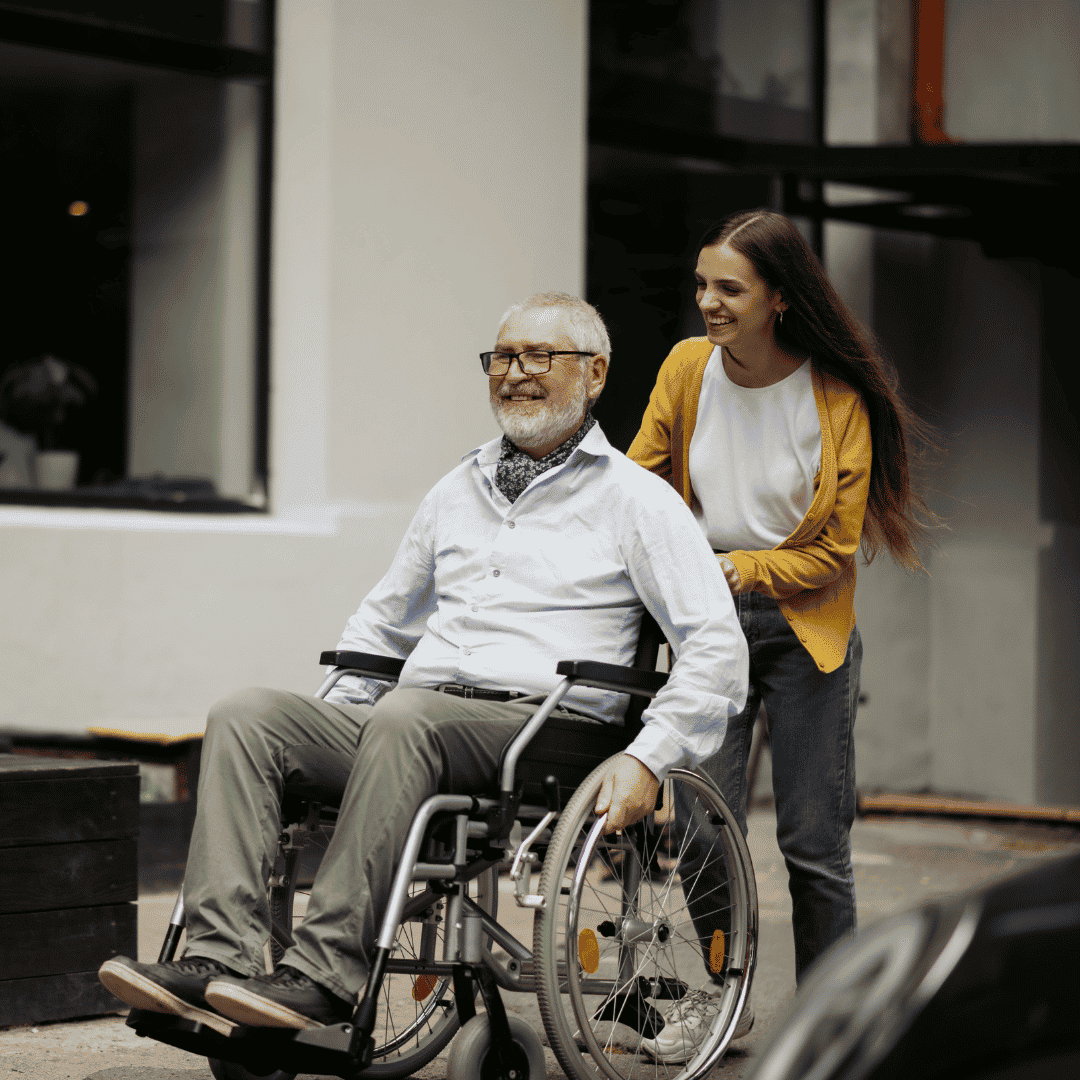

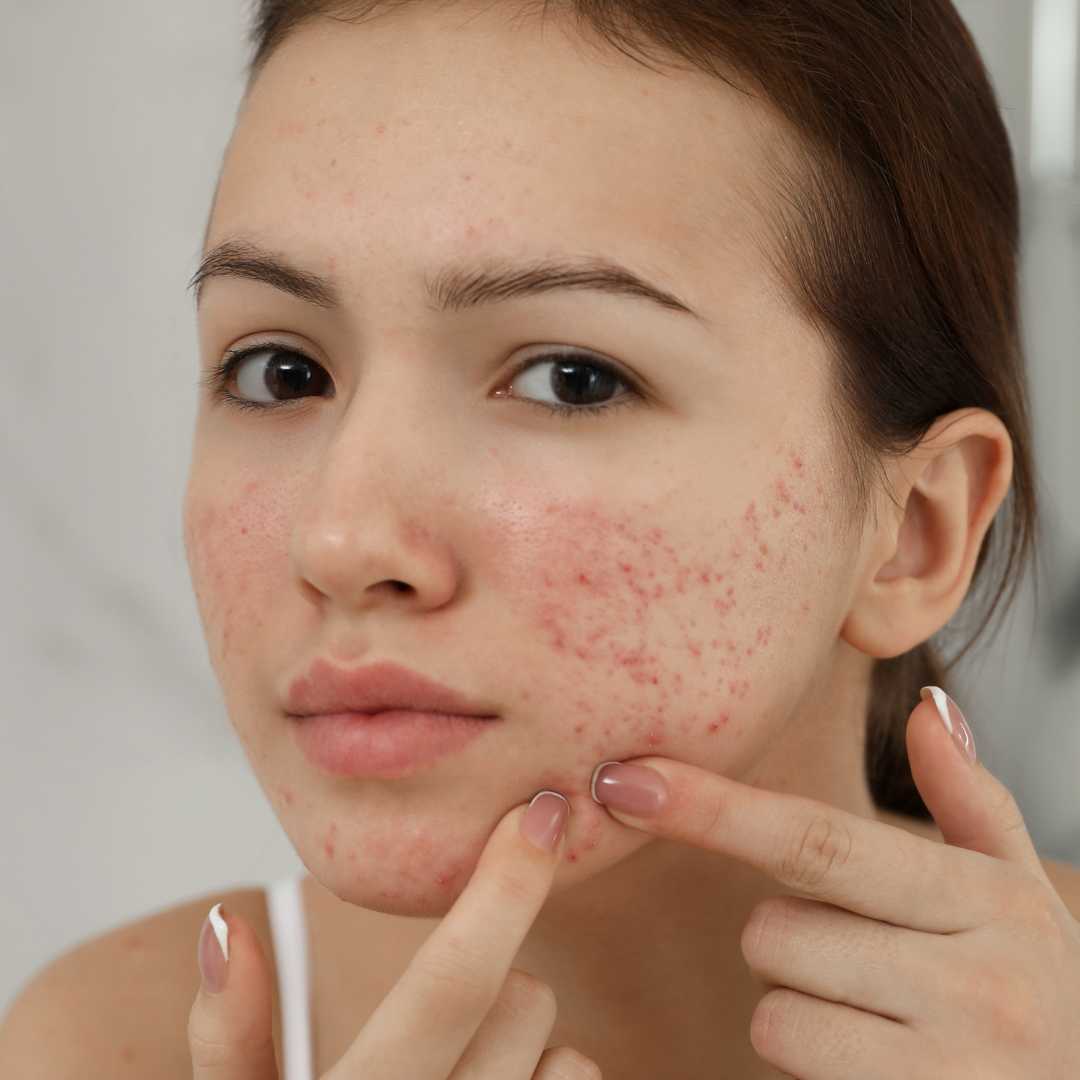
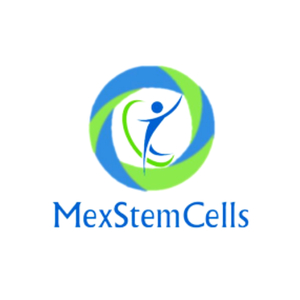


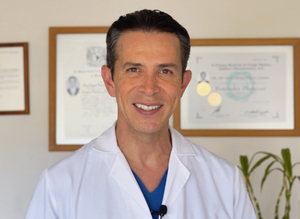







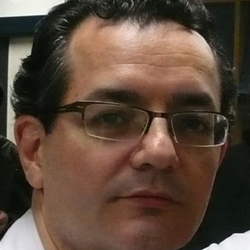
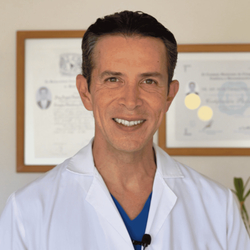

.png)
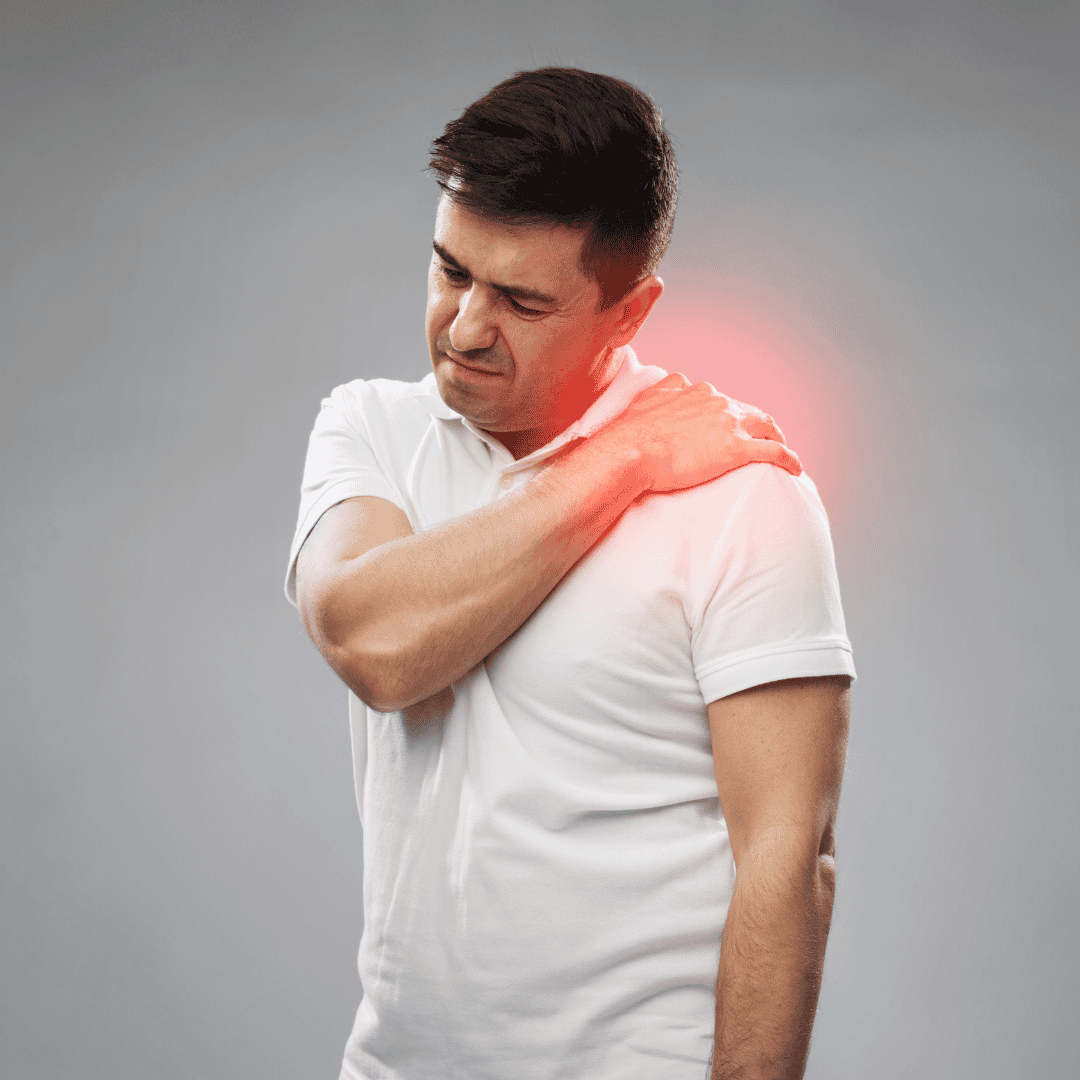

.png)


.png)

.png)


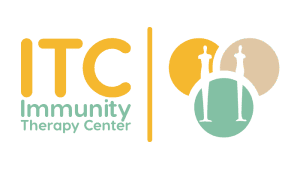
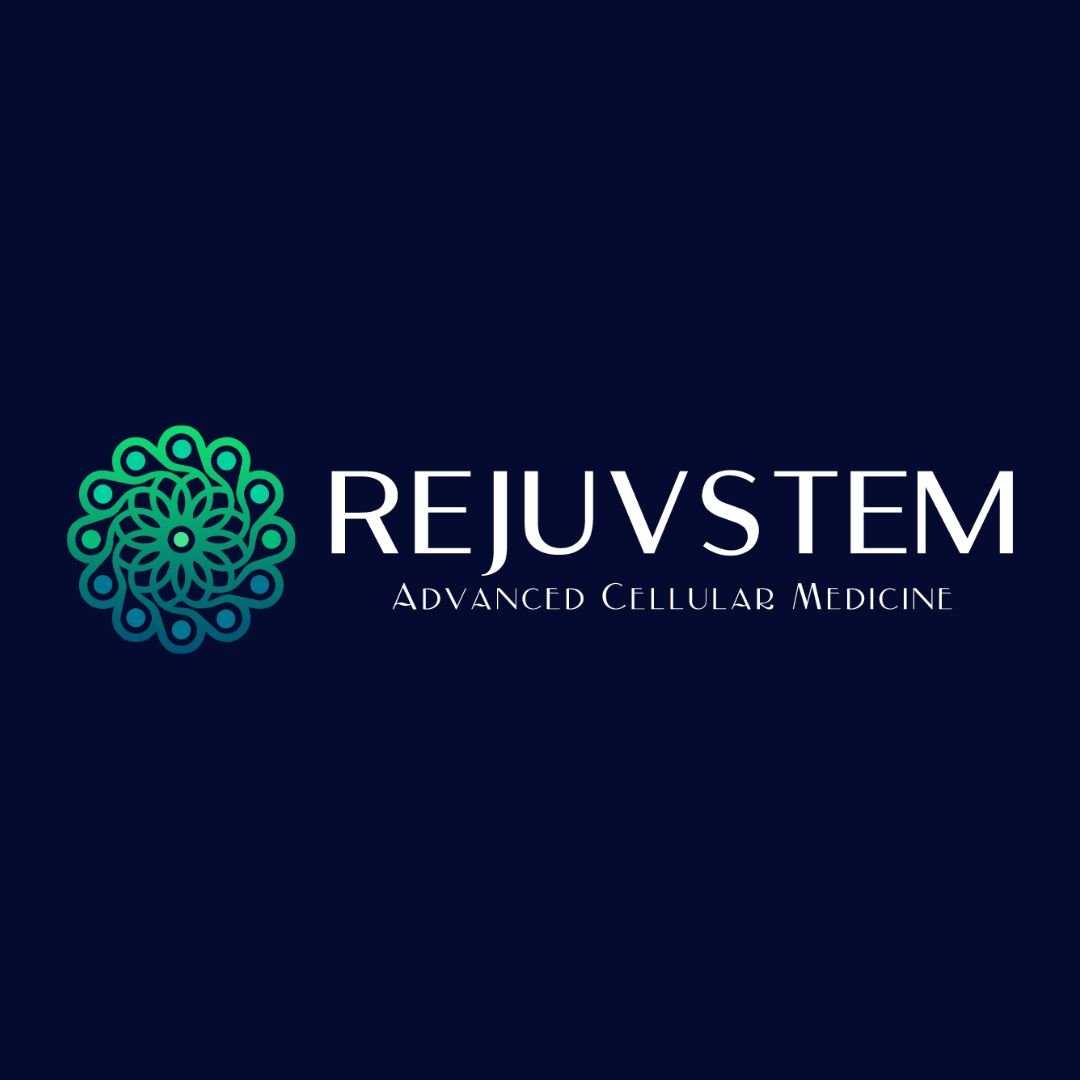
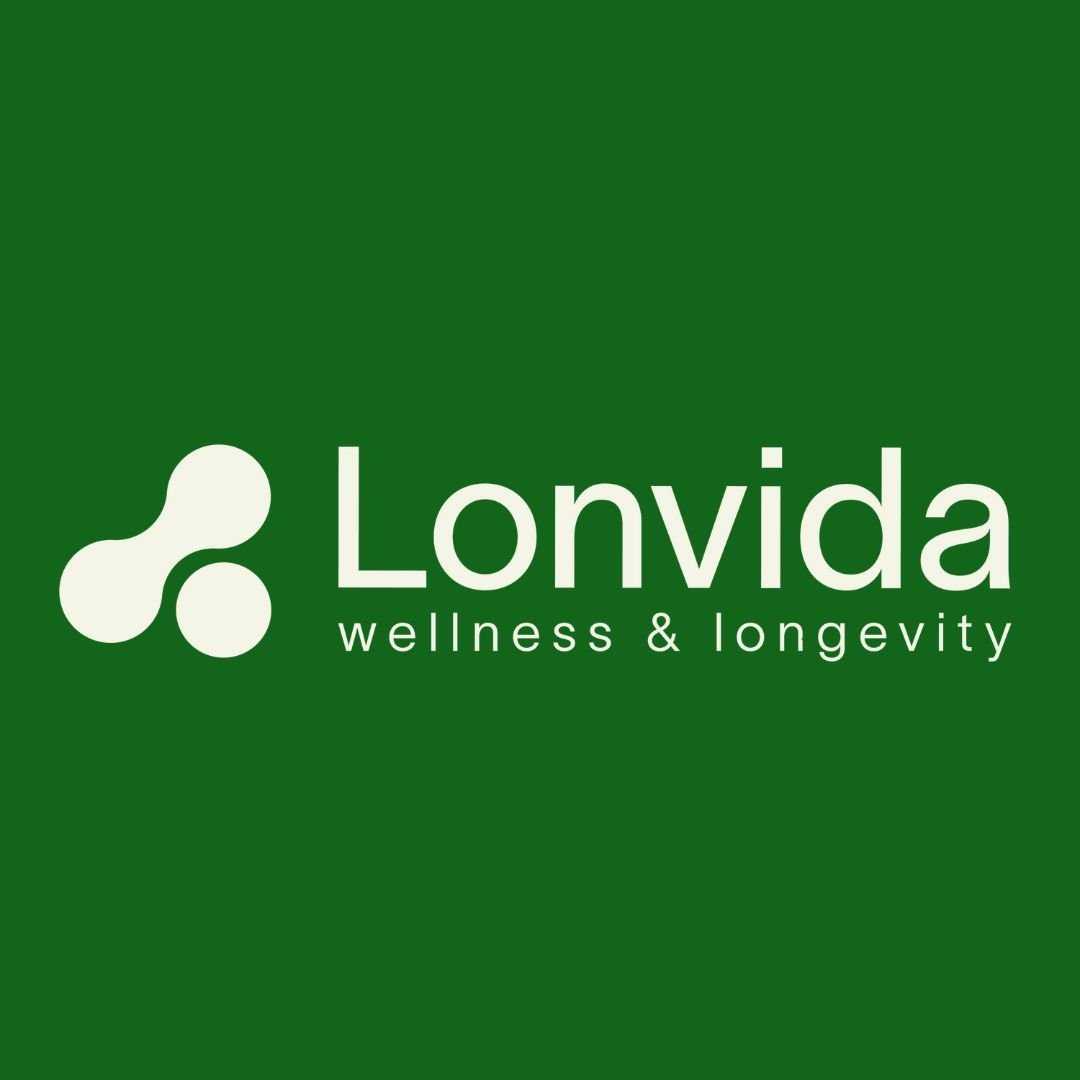

Share this listing